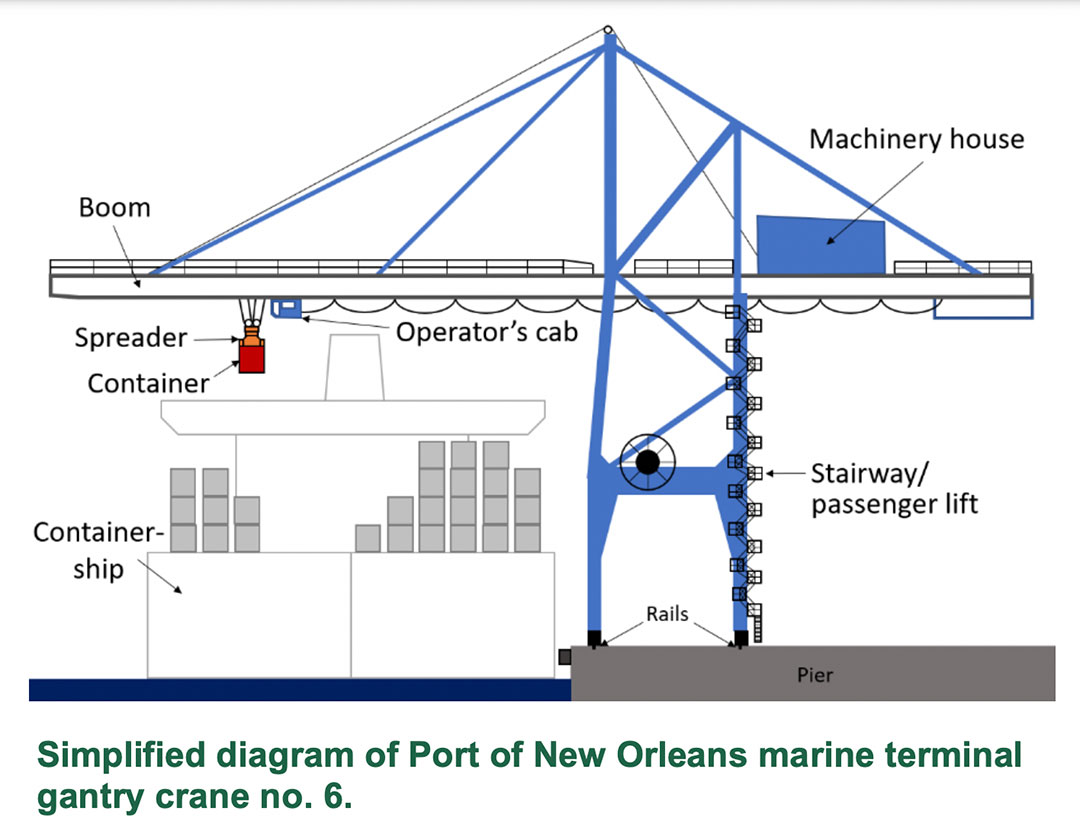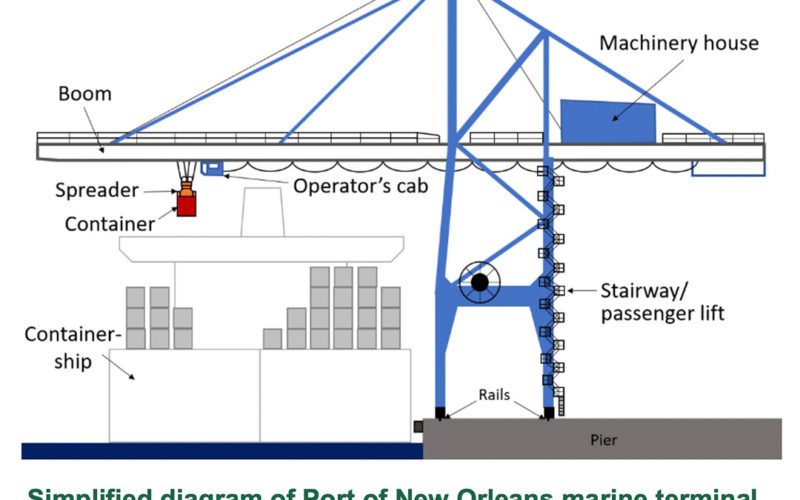
Powerful winds from an unexpected thunderstorm blew a containership free from a New Orleans pier and damaged shoreside gantry cranes loading the vessel, the National Transportation Safety Board (NTSB) determined.
The 1,099-foot CMA CGM Bianca was moored alongside the Napoleon Avenue Container Terminal on Aug. 2, 2020. A sudden downburst from the thunderstorm buffeted the ship with 70-mph winds at about 1400.
“The vessel was using all lines that were in service and rigged for a starboard-side-to mooring under normal conditions,” the NTSB report said. “But the force of wind against the ship’s sail area during the downburst overcame the breaking strength of several lines, leading to the ship’s moving away from the pier.”
The two cranes required more than $15 million in repairs, while the Malta-flagged ship sustained about $60,000 in damage. Millions of tiny plastic pellets entered the river after a container fell and broke open. They were not recovered.
Cargo loading operations overseen by local longshoremen began at about 0715 using gantry cranes 5 and 6. That morning, the National Weather Service (NWS) forecast called for a 40 percent chance of showers and thunderstorms with light winds.
About 40 minutes before the incident, the weather service issued a statement about a strong thunderstorm 13.5 miles to the west over St. Rose, La., moving east at 15 mph. “However, the statement made no mention of the threat of high winds, and a severe thunderstorm warning was not issued,” the report said.
Longshoremen operating cranes 5 and 6 were loading 40-foot cargo containers forward of the deckhouse when rain began to fall at about 1350. Within 10 minutes, conditions became so bad CMA CGM Bianca’s master thought they came from a tornado. Longshoremen operating the gantry cranes said the winds strengthened “in seconds.”
A towboat directly across the river recorded a 73-mph wind gust at about 1400 when the ship broke free.
Investigators determined the severe winds likely originated “from the outflow of a thunderstorm-generated downburst.” Downbursts can cause damage like an EF0 or EF1 tornado and are sometimes mistaken for them, according to the NWS.
Seven forward mooring lines and three aft mooring lines holding CMA CGM Bianca to the terminal parted at about 1402, and winds pushed the ship’s bow into the river. At about the same time, the two cranes began moving along their rails.
The container held by crane 5 fell and hit other cargo on the ship as the crane rolled. It landed on the pier and broke open, allowing countless tiny plastic “nurdles” to enter the Mississippi. The other container and some crane components fell into the ship’s hold.
Within minutes, crew aboard the containership dropped both anchors and started the bow thruster and engine to maintain the ship’s position about 80 feet from the pier. “The quick actions of the crew prevented the vessel from drifting downriver, where it could have caused damage to other vessels or shore infrastructure,” the report said.
The sudden change in weather left little time for the crane operators to respond. Investigators determined they acted properly by trying to move their suspended containers into a safe position before power to their cranes automatically shut off due to the high wind.
Crew aboard CMA CGM Bianca inspected the 16 mooring lines on June 6, 2020, and 14 were reported to be in good condition. Two were rated as acceptable. Ten of the 16 parted during the breakaway.
All five head lines snapped, as did two of the three forward spring lines and three of the four aft spring lines. The four stern lines held. The lines were made from different materials, with most made either from polyester/polyolefin or nylon, and two made from polypropylene. At least one of each type parted during the incident.
The NTSB did not explore whether the use of lines made from different materials influenced the outcome. However, the agency noted each material has different properties that could impact performance.
“If lines with less elasticity are combined with lines with more elasticity, the less elastic lines may take greater load than the more elastic lines when under heavy tension,” the NTSB said. “In extreme conditions, this may result in unexpected failure of the less elastic lines and successive failure of all lines.”
The Port of New Orleans declined to comment on the NTSB findings, while the port’s operator, New Jersey-based Ports America, did not respond to an inquiry. •

